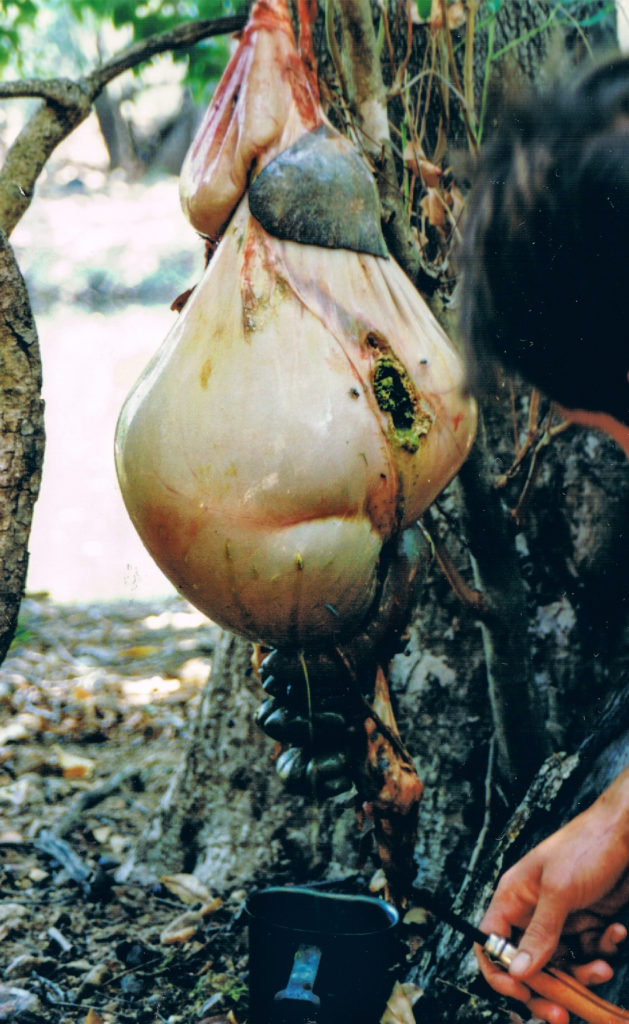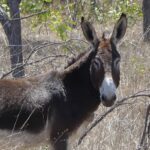Rumen fluid is a greenish-colored liquid substance with an aromatic and slightly sour smell. It is uniformly distributed in the rumen of antelopes and mixed with grazing or browsing roughage, fermentation gases, and bioactive organisms.

The rumen liquid primarily comprises anaerobic bacteria and partially digested plants. It is also likely to contain gastrointestinal parasites. While the bacteria are not pathogenic and will pass through the digestive system harmlessly, some parasites could infect humans.
Historical description of drinking rumen fluid
There is one historical record of men drinking rumen fluids. It was described in a book linked here. It says: ‘…In the buff morning light, Riley saw a native boy plunge his head into the camel’s gaping rumen and drink. Hamet seeing Riley’s interest, told him to remove the boy and take his place. Riley scooped the nauseating cavity with a bowl and poured the ropy green fluid down his throat. What he swallowed could not have been more refreshing had it been the spring water he once dreamed of turning into a spa. “Though its taste was exceedingly strong,” he later wrote with his usual equanimity, “yet it was not salt, and it allayed my thirst”…’
Personal experience with drinking rumen fluid
Not only are there historical records, but drinking rumen liquid in emergencies was also part of the standard survival training in the South African Air Force (SAAF) in the 1980s. I attended one of these trainings.

During the training, we were given a freshly shot, non-gutted impala and taught how to carry the relatively heavy animal efficiently and with the least effort. We then removed the entire ruminant digestive system, hung it on a tree, and let the liquid settle in the lower parts. See the photos attached to illustrate this. After a few minutes, we poked the lower part of the rumen with a knife and caught the dripping liquid in our mess tins. We drank the liquid and then received a second helping in a slightly different manner.
.
.
.

Through the shot hole in the rumen (presumably caused by a poorly aimed shot), we reached into the stomach and took a handful of rumen content, which we squeezed in our fists. By doing so, rumen liquid dripped over our thumbs and into our mouths.
The taste of the liquid was unpleasant, and we needed a lot of water from the nearby pond to clean our mouths. However, in emergencies, it can be a way to prevent dehydration.
.
.
.
.
.
Lessons learned from drinking rumen fluid:
- A significant quantity of liquid can be extracted from a ruminant’s stomach. The exact amount varies depending on whether the animal was a grazer or a browser, its size, the extraction rate, and other factors.
- To obtain rumen fluid, a knife can be poked into the underside of the rumen, or the contents can be taken out by hand, squeezed, and consumed.
- The taste of this liquid is unappealing, but it can be life-saving in emergencies.
- Drinking rumen fluid should be combined with other techniques to prevent dehydration. These could include covering oneself with sand.
.





